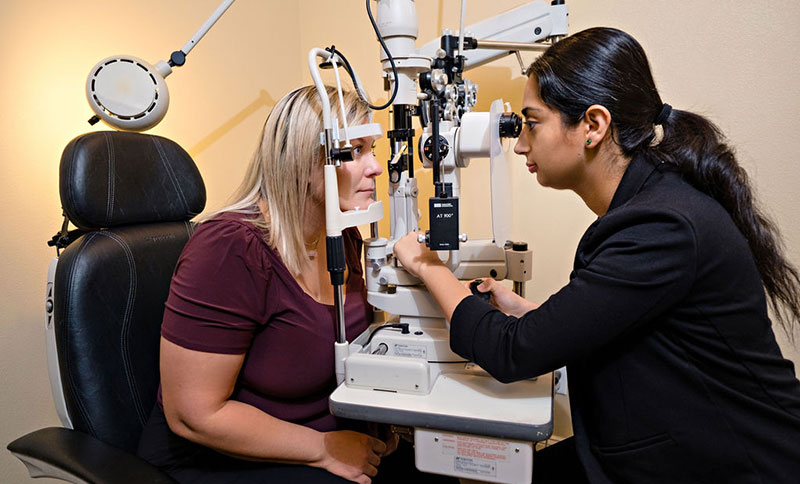Discover the most effective Eye Center Andalusia: Advanced Vision Solutions
Discover the most effective Eye Center Andalusia: Advanced Vision Solutions
Blog Article
Comprehending the Various Vision Correction Procedures Available for Clearer Sight
In the realm of vision modification procedures, a multitude of alternatives exist to resolve refractive errors and provide people with clearer sight. Let's explore the ins and outs of these procedures and lost light on the path to attaining boosted vision clearness (Cardiologist Andalusia).
LASIK Surgical Treatment
LASIK surgical treatment is a typical refractive treatment used to correct vision troubles such as farsightedness, astigmatism, and nearsightedness. This medical technique, which stands for Laser-Assisted in Situ Keratomileusis, intends to improve the cornea to improve just how light is focused on the retina, inevitably boosting vision clarity.
Among the key advantages of LASIK surgery is the quick enhancement in vision experienced by individuals. Several people notice a significant enhancement in their eyesight immediately after the treatment. In addition, the majority of patients report minimal pain and discomfort during the surgical procedure and recovery duration. The healing time for LASIK is relatively quick, with lots of people going back to their daily tasks within a day or more post-operation. In general, LASIK surgical treatment is a popular option for people seeking a long-term service for their vision troubles.
PRK Procedure

PRK is an ideal choice for people with slim corneas or those at a greater danger of eye injuries, as it does not involve producing a corneal flap. The recuperation procedure for PRK is a little longer compared to LASIK, as the epithelium requires time to restore. Clients might experience discomfort and fuzzy vision for a few days adhering to the treatment.
In spite of the longer recuperation time, PRK can generate outstanding lead to vision improvement, making it a valuable choice for those who may not be appropriate prospects for LASIK surgical treatment. - Eye Center Andalusia
Implantable Lenses
Unlike PRK where the cornea is improved directly, implantable lenses use another method for remedying vision by inserting artificial lenses inside the eye. This procedure is especially useful for individuals with high levels of farsightedness, astigmatism, or nearsightedness that might not appropriate prospects for laser surgeries like LASIK or PRK.
Implantable lenses, additionally referred to as phakic intraocular lenses, job by supplementing the eye's natural lens with a man-made one. These lenses can be put before the natural lens (anterior chamber) or behind the iris and in front of the natural lens (posterior chamber) By readjusting the power and positioning of these lenses, ophthalmologists can effectively correct refractive mistakes and boost visual acuity.
One benefit of implantable lenses is that they are detachable and exchangeable, supplying versatility for future changes. As with any type of surgical procedure, there are risks entailed, such as infection or cataract development. Individuals taking into consideration implantable lenses need to consult with an eye care expert to identify the most appropriate alternative based on their specific requirements and eye health and wellness.
Corneal Rings

The procedure for putting corneal rings is relatively quick and minimally invasive, typically performed as an outpatient procedure. Throughout the surgery, the eye doctor makes a tiny incision in the cornea and inserts the rings at a specific depth. When in place, the rings aid to reshape the click to read more cornea, providing a smoother surface for light to go into the eye, which can lead to clearer vision.
Corneal rings are taken into consideration a relatively easy to fix treatment, as they can be gotten rid of or replaced if necessary. While they might not entirely get rid of the demand for glasses or call lenses, corneal rings can dramatically boost vision quality and general aesthetic comfort for people with keratoconus or various other corneal irregularities.
Refractive Lens Exchange
Complying with the improvement of corneal irregularities with treatments like corneal rings, one more vision modification technique that can attend to refractive errors is Refractive Lens Exchange (RLE) RLE is a procedure that entails replacing the eye's all-natural lens with an artificial intraocular lens (IOL) to correct refractive errors such as presbyopia, nearsightedness, and farsightedness. This procedure is specifically useful for people that may not appropriate candidates for treatments like LASIK or PRK due to elements such as thin corneas or high refractive mistakes.
RLE is akin to cataract surgical procedure, as view publisher site both entail eliminating the eye's all-natural lens; nonetheless, in RLE, the lens is clear, not over cast as in cataracts. The synthetic lens implanted throughout RLE can be tailored to deal with the person's particular refractive mistake, offering clear vision at different ranges. Recuperation time for RLE is relatively quick, and individuals can expect improved vision soon after the treatment. Just like any type of surgery, prospective dangers and problems exist, so a complete assessment with an eye treatment specialist is vital to identify if RLE is the appropriate vision adjustment alternative.
Verdict

In the world of vision adjustment you can try this out procedures, a wide range of choices exist to address refractive errors and supply individuals with more clear sight.LASIK surgical procedure is an usual refractive treatment made use of to remedy vision issues such as astigmatism, farsightedness, and nearsightedness.While also a typical refractive procedure, the PRK (Photorefractive Keratectomy) method differs from LASIK surgical treatment in its technique to fixing vision issues.Following the correction of corneal irregularities with treatments like corneal rings, one more vision modification strategy that can address refractive errors is Refractive Lens Exchange (RLE) LASIK surgical treatment, PRK procedure, implantable lenses, corneal rings, and refractive lens exchange are all alternatives that can attend to various vision concerns.
Report this page